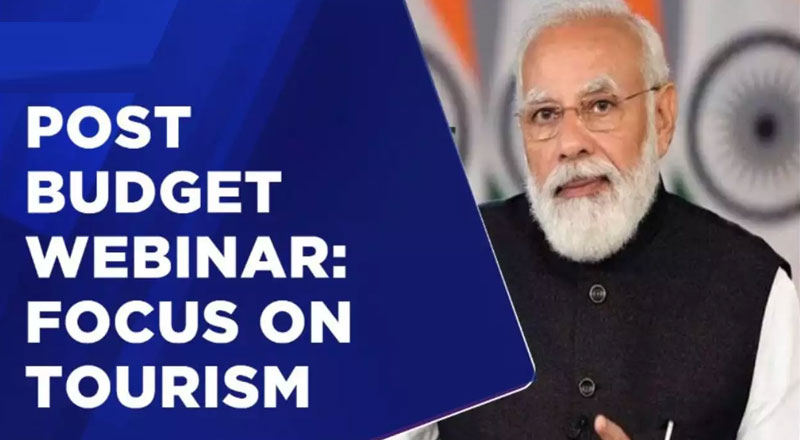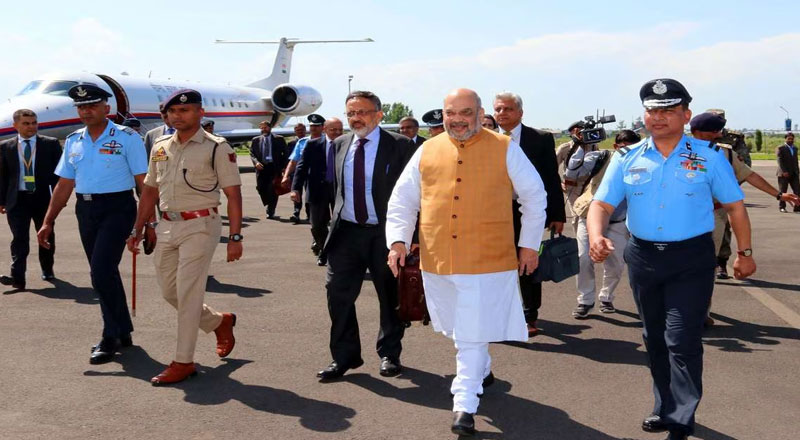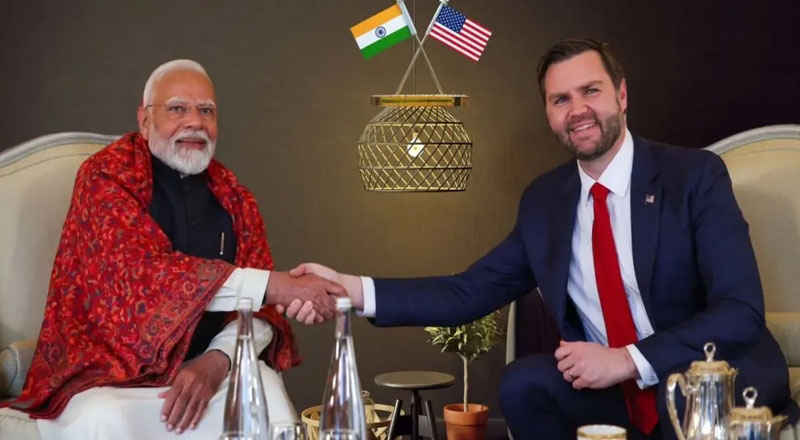The Prime Minister, Shri Narendra Modi, addressed a Post Budget Webinar on the subject of ‘Developing Tourism in Mission Mode’. It is the seventh of a series of 12 post-budget webinars organized by the government to seek ideas and suggestions for effectively implementing the initiatives announced in the Union Budget 2023.
Addressing the gathering, the Prime Minister remarked that the new India of today is moving forward with a new work culture. He expressed delight at the appreciation shown towards this year’s Budget by the people of India. Reflecting on the previous work culture, the Prime Minister said that something as innovative as the post-budget webinars would not have existed if not for the present government’s spirit of discussions with all the stakeholders before and after the budget. The Prime Minister underlined that the main objective of these webinars is to maximize the output of the budget as well as its timely implementation. “These webinars work as a catalyst in achieving the goals set during the budget”, Shri Modi said. Speaking from the experience of working as the head of the government for more than 20 years, the Prime Minister emphasized that the desired results are achieved within the stipulated time when all stakeholders align themselves with any strategic decisions taken by the government. He expressed happiness at the suggestions received through the post-budget webinars that have been conducted so far.
The Prime Minister underlined the need to think out of the box and plan ahead to take tourism in India to new heights. Throwing light on the parameters before a tourist destination is developed, the Prime Minister listed out the potential of the place, ease of travelling to the destination, and new ways to promote the destination. He further added that emphasizing these parameters helps in preparing a roadmap for the future. The Prime Minister highlighted the huge scope of tourism in the country and listed out coastal tourism, beach tourism, mangrove tourism, Himalayan tourism, adventure tourism, wildlife tourism, eco-tourism, heritage tourism, spiritual tourism, wedding destinations, tourism via conferences and sports tourism. He also gave the example of Ramayan Circuit, Buddha Circuit, Krishna Circuit, Northeast Circuit, Gandhi Circuit, and pilgrimages of all saints, and stressed the need to work together collectively on this. The Prime Minister informed that several places in India have been identified through the route of competitive spirit and challenge in this year’s Budget while also focussing on the holistic development of the destinations. Shri Modi asked for a detailed discussion on how different stakeholders can be engaged.
The Prime Minister busted the myth that tourism is a fancy word associated only with the high-income groups of the country. He noted that yatras have been a part of India’s cultural and social life for centuries and people used to go on pilgrimages even when there were no resources available to them. He gave the example of Char Dham Yatra, Dwadash Jyotirling Yatra, 51 Shaktipeeth Yatra and said that it is used to connect the places of our faith while also strengthening the unity of the country. Observing that the entire economy of many big cities of the country was dependent on these yatras, the Prime Minister lamented the lack of development to enhance facilities suited to the times despite the age-old tradition of yatras. He pointed out that hundreds of years of slavery and the political neglect of these places in the decades after independence were the root cause that inflicted damage to the country. “The India of today is changing this situation”, the Prime Minister interjected as he noted that the increase in the facilities leads to an increase in the attraction among the tourists. He gave the example of Kashi Vishwanath Dham in Varanasi and informed that around 80 lakh people used to visit the temple in a year before it was rebuilt, but the tourist footfall crossed 7 crores last year after the renovation. He also informed that 15 lakh devotees have gone to see Baba Kedar compared to only 4-5 lakhs before the completion of reconstruction work in Kedarghati. Similarly in Pavagadh of Gujarat, the Prime Minister informed that 80 thousand pilgrims go for the darshan of Maa Kalika compared to only 4 to 5 thousand people before the renovation. The Prime Minister noted that the increase in facilities has a direct impact on the number of tourists and the increasing numbers mean more opportunities for employment and self-employment. The Prime Minister also touched upon the Statue of Unity, the tallest statue in the world and informed that 27 lakh tourists visited the place within a year of its completion. He underlined that India’s tourism sector can increase manifold with growing civic amenities, good digital connectivity, good hotels and hospitals, no trace of filth, and excellent infrastructure.
The Prime Minister also mentioned the Kankaria lake project in Ahmedabad, Gujarat and informed that skill development for those working in the food stalls was carried out apart from the redevelopment of the lake. He emphasized on cleanliness along with modern infrastructure and informed that about 10,000 people visit the place every day despite the applicable entry fees. “Every tourist destination can also develop its own revenue model”, the Prime Minister said.
“Our villages are becoming centers of tourism”, the Prime Minister remarked as he underlined that remote villages are now coming up on the tourism map due to their improving infrastructure. He informed that the Central Government has started the Vibrant Village Scheme for the villages situated along the border and emphasized the need to support businesses such as homestays, small hotels and restaurants.
Throwing the spotlight on the increasing number of foreign tourists in India, the Prime Minister noted the growing attraction towards India and informed that 8 lakh foreign tourists have come to India in January this year compared to only 2 lakhs in January last year. The Prime Minister also underlined the need to profile such tourists and create a special strategy to attract them to the country who have the maximum spending capacity. He informed that foreign tourists who come to India spend an average of $1700, while international travelers spend an average of $2500 in America and around $5000 in Australia. “India has a lot to offer to high-spending tourists”, he pointed out. The Prime Minister stressed that every state needs to change its tourism policy to align with this thought. He gave the example of bird watchers who camp in the country for months and underlined that policies should be made to target such potential tourists.
Highlighting the basic challenge of the tourism sector, the Prime Minister pointed out the lack of professional tourist guides here and stressed the need for certificate courses in local colleges for guides. He suggested that guides working in a particular tourist destination should also have a specific dress or uniform so that tourists will come to know at first glance. The Prime Minister noted that a tourist’s mind is full of questions and guides can help them find answers to all those questions.
The Prime Minister also stressed promoting school and college trips to the northeast so that more people become aware and start developing infrastructure and facilities for tourists. He also emphasized promoting wedding destinations as well as sports destinations. The Prime Minister insisted on developing 50 such tourist destinations that every tourist from around the globe is bound to visit on his trip to India. He also mentioned developing apps for tourist destinations in all languages listed in the United Nations.
Concluding the address, the Prime Minister expressed confidence that this webinar will seriously consider every aspect related to tourism and come up with better solutions. “Tourism has the same potential in the country as agriculture, real estate development, infrastructure and textile”, the Prime Minister concluded.





